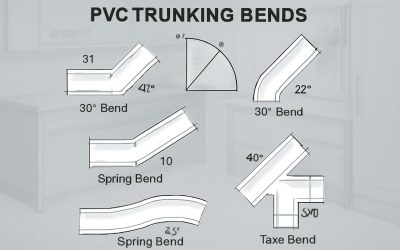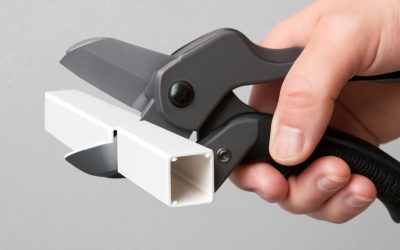
A cable duct is a type of conduit for electrical cables that helps to keep them organized. It can also be used to protect these cables from moisture and other external factors. Cable ducts are made of various materials. Depending on the location of the application, it may be better to choose a material that is suitable for the condition.
The market for cable ducts is growing because of the increasing demand for wire and cable management in commercial and industrial sectors. These systems help to ensure orderly routing of cables, which increases operational safety and saves time and space. Some of the benefits of using a cable duct include easy installation, fewer trips, safer wiring, and protection from moisture, chemicals, and animals.
For applications that require thicker cables, it is advisable to choose open slot wire ducts. They have rounded edges to protect the cables. Various types of wire ducts are available, which differ in the structure, color, and size.
Halogen-free cable ducts are designed to provide higher levels of operational safety and are particularly suited to space-saving cable routing systems. There are many different applications for these ducts, including in building infrastructure and traffic engineering.
Various cable ducts are also designed for specific industries. This includes a wide range of options for computer networks, monitors, and electrical panels. Whether you are looking for a flexible duct, a standard duct, or a straight duct, you can be sure to find one to suit your needs.
Concrete cable ducting is an ideal option because it is cost effective, buried in the ground, and resistant to surface temperature changes. Spiral hoses are especially useful for guiding cables through the ducts, while webbing hoses are used to bundle them together.
Cable ducts can be constructed from PVC, Noryl, or stainless steel. Plastics are inexpensive, but they are unreliable. Therefore, you should consider the quality and durability of your duct when choosing a material. If you are planning to run several conduit runs, you can choose solid colors that allow you to easily identify the length of the run. However, you may be required to purchase additional quantities for other colored ducts.
In addition to offering an effective way to route cables, a wire duct can also be used to make the cables easy to pull. They are a convenient option for organizing wires and cables, and can be cut to any length you need.
Wire and cable ducts are commonly installed in areas of high traffic, such as in computer networks. They are also found in home and office settings. Several manufacturers of these ducts offer different models for a variety of uses. Moreover, they are available in many colours.
Another popular alternative is a cable raceway. They are used to run cables along baseboards and inside ceiling tiles, enabling them to be hidden beneath flooring. Typically, they are used to protect wires from foot traffic.
Another common use for cable ducts is for closed-circuit monitoring systems. Many monitors are run in sequence, which requires a safe, well-structured wiring system.



0 Comments